The Ultimate Guide to Modern Furnaces [2020 Edition]
As another year passes by, we always look to the future for new and exciting innovations in the furnace industry. New forms of fuelling, operating, and maintaining furnace systems are appearing on the market each year, and 2020 is looking like no exception.
So what does next year’s furnace landscape have in store? With so many options available, our experts at Peel Heating & Air Conditioning will be there for all your furnace needs.
Types of Furnaces
There is no doubt we have come quite a long way from the wood-burning furnaces of the early to mid 20th century, but what are our furnace options as we inch through the current millennia? Modern furnaces are available in a variety of types and styles, but how can you tell them apart?
Furnaces break down into three types: single-stage, two-stage, and modulating.
Single-Stage Furnace
Single-stage furnaces are, by far, the most simple to explain in terms of operation. These furnaces have two functions: off and on. When you set the temperature on your thermostat, your furnace opens the fuel valve, feeding fuel to the burners, and runs until the specified temperature is achieved before turning off again. This cycle will repeat to maintain the temperature in your home.
Single-stage furnaces are comparatively inexpensive to buy and install but are the least energy-efficient, which means what you save in the short term might not make up for increased fuel costs in the long run.
Two-Stage Furnace
Two-stage furnaces offer three different heating functions: high, medium, and off. Your valve will open fully or partially depending on the thermostat’s instructions, and then shut off again when your home reaches the desired temperature.
Two-stage furnaces are a better option for people who are looking to save on their energy costs but don’t want to spend the money on higher-end furnaces.
Modulating Furnace
In terms of energy savings, modulating furnaces are your best bet. Modulating furnaces are always running but adjust the temperature in precise increments to offer you more granular control over your home’s temperature.
Modulating furnaces are the most fuel-efficient, but also have the highest up-front costs.
Furnace Fueling Options
Now that you understand the difference between types of furnaces, it’s time to dive into fueling options. Just like the options available above, the type of fuel you choose will depend on a variety of factors, including what’s available in your area and the current cost of each fuel type.
Gas Furnace
Gas furnaces are by far the most popular furnace style in North America. When you set your thermostat, the gas valve opens and gas moves to the furnace burners, which produce heat.
Gas is the most one of the most available and fuel-efficient options for your furnace. However, your home needs to be in an area where gas is available.
Oil Furnace
Oil furnaces operate pretty much the same way as a gas furnace, but because oil burns hotter than gas, it offers more heat for the same amount of fuel. However, oil is more expensive than gas to use and is not a very efficient fuel source.
Oil furnaces generally have an Annual Fuel Utilization Efficiency (AFUE) rating of 80% to 90%, while gas has a higher efficiency rating ranging between 90% and 98% AFUE.
Electric Furnace
Electric furnaces are becoming increasingly popular among environmentally conscious consumers, but are a costly alternative to traditional gas-powered furnaces. Electric furnaces require more energy to heat your home, meaning more money to run.
However, electric furnaces are less expensive to install and maintain with life-spans up to 30 years long.

New Technology For You!
Some of the most sought-after features for all new furnaces are their ability to provide warm, clean, and cost-effective heat. Modern technology aims to offer a new generation of homeowners with these functions and more!
Furnaces are generally categorized by low, mid, or high-end, and more and more people are starting to see the benefits of having high-end furnaces. These can include higher efficiency ratings, cleaner air output, and even ‘smart’ technology.
‘Smart’ technology allows consumers to have a better understanding of the operation of their furnace. New furnaces can have built-in configuration and diagnostic systems so consumers can keep a better eye on the overall health and operation of their home heating system.
On top of that, there is a growing interest in being able to control your home heating through just using your phone!
Looking to Upgrade Your Furnace
Our goal is to give you the best heating system possible for your home, which is why we work hard to stay up-to-date on the latest home-heating technologies and innovations.
Are you thinking about upgrading or tuning up your furnace system? Contact us today and speak to our qualified professionals about what a new furnace can do for you, your home, and your family.

![The Ultimate Guide to Modern Furnaces [2020 Edition]](https://peelheating.ca/wp-content/uploads/2019/12/ultimate-guide-blog-hero.jpg)



